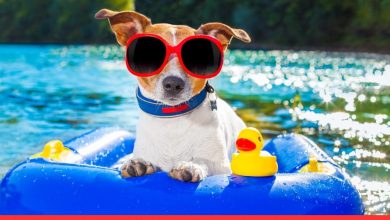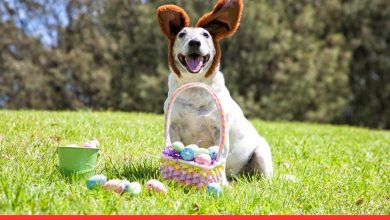Walking the Puppy for the First Time? Exciting Tips Ahead!


As a new puppy parent, you’re about to embark on an exhilarating journey full of delightful firsts—first snuggle, first meal, first tricks, and of course, the first walk. This first walk, a simple act of walking the puppy, is one of the first significant steps that form the foundation for many more joyous moments to come.
However, we understand that, as wholesome as it sounds, it can often be nerve-wracking for first-timers. You may wonder, “When is the right time? What if my puppy doesn’t cooperate? How long should we walk? What if they encounter an unfriendly dog?”
Well, fear not, dear pet parent, because we’re here to guide you through this seemingly daunting process. We have put together this blog post to answer all your queries, quell your concerns, and ensure you and your puppy have the most enjoyable walks together.
So, buckle up as we kickstart this joyous journey of walking the puppy with all the essential tips and tricks that you’ll need. Let’s wag our way through this fantastic adventure together!
Why is Walking Your Puppy Crucial?
If you have ever wondered, “Why is walking my puppy so important? Can’t they just run around in my backyard?” then you’re not alone. Many new puppy parents grapple with understanding the significance of walking the puppy. Well, let’s delve into this topic and explore the manifold benefits your furry friend can reap from regular walks.
Physical Health
First and foremost, walking your puppy contributes significantly to their physical health. Just like us humans, puppies also require regular exercise to maintain a healthy weight. Obesity in dogs can lead to numerous health issues, such as diabetes, heart disease, and arthritis. Walking helps burn calories and strengthens their muscles, keeping them lean and fit.
Mental Stimulation
Walks aren’t merely about physical exercise. They’re an opportunity for your puppy to explore the world beyond your house. Every new scent, sight, and sound your puppy encounters during their walk stimulates their brains, enhancing their mental development.
Training and Discipline
Walking your puppy also aids in training. It’s a perfect opportunity to teach them basic commands like “sit,” “stay,” and “heel.” With consistency and patience, your puppy will learn to heed your instructions, aiding in overall discipline.
Socialization
Socializing your puppy at an early age is crucial. Regular walks introduce them to various world elements—different people, other dogs, and even other creatures like birds and squirrels. These interactions help your puppy become friendly and comfortable around others, preventing future behavioral issues.
Bonding Time
Lastly, walks are an excellent time for bonding. Taking your pup for a walk helps build trust and strengthens your bond. They’ll see you as their leader, which will also make training easier.
Understanding the ‘whys’ behind walking the puppy can indeed do wonders. It shows that this simple activity is not just a routine but a significant aspect of your puppy’s life that contributes to its health, growth, and happiness.
So, with this newfound understanding, let’s gear up to make your puppy’s walk times the best they can be!

Pre-Walking Preparations
Before diving headfirst into the world of puppy walks, there are essential pre-walking preparations you need to make. Don’t worry, this isn’t as daunting as it might sound! Here, we’ll guide you on when to start walking your puppy, choosing the right gear, and ensuring proper vaccinations. So let’s get started!
When to Start Walking Your Puppy
You might be eager to show your puppy the great outdoors, but patience is key here. Puppies usually get their full set of vaccinations between 14 and 16 weeks. Until then, their immune system isn’t fully developed, making them susceptible to infections.
It’s usually safe to start walking them a week after they’ve received their final round of vaccines. However, always consult with your vet for the best advice tailored to your puppy.
Picking the Perfect Gear
Choosing the right gear is essential for a successful puppy walk. Many new pet parents wonder, “Should I use a collar or a harness?” Harnesses are generally recommended for puppies because they distribute pressure more evenly than collars, reducing the risk of injury.
As for the leash, a standard six-foot leash is a good starting point. Avoid retractable leashes, as they can be dangerous and don’t offer much control. Remember, your leash should be strong yet light enough for your puppy’s size.
The Importance of Vaccination
Before you expose your puppy to the outside world, they must be fully vaccinated. Puppies can pick up diseases from contaminated water, feces, or other dogs. Getting all the prescribed vaccinations will keep your puppy safe when they’re exploring the outside world. Always follow your vet’s advice on the appropriate vaccination schedule.
Now that we’re well-prepared, it’s time to look forward to the thrilling adventure that awaits you and your puppy. Excitement is mounting, and tails are wagging, so let’s stride right into it and make the most of walking the puppy!

Tips for Your Puppy’s First Walk
Hooray! You’re all set to take your puppy on their first ever exploration of the outside world. This momentous occasion calls for some tried and tested tips to ensure it’s an enjoyable experience for both of you. Let’s jump right in!
- Take it Slow: Remember, this is a brand new experience for your furry friend. Be patient with them, and let them explore at their own pace. Short, slow walks are the order of the day. Aim for 5-minute walks per month of your puppy’s age, until they build up the stamina.
- Use Rewards: Positive reinforcement goes a long way. Reward your puppy with treats and praise when they behave well on the leash. This will encourage them to repeat this good behavior.
- Teach Basic Commands: The great outdoors is an excellent training ground for basic commands like “sit”, “stay”, and “heel”. Start implementing these commands during your walks to guide your puppy and keep them safe.
- Stay Alert: Always keep a keen eye on your surroundings to avoid potential dangers. Keep your pup away from unknown plants and trash, and always be on the lookout for other dogs.
- Keep it Fun: Above all, make sure the walk is fun for your little one. You want them to associate walks with happy times. Let them sniff around, keep the energy upbeat, and ensure your pup is enjoying the experience.
Armed with these tips, you and your furry friend are ready for a sensational first walk. Remember, the aim is not just to exercise but also to explore and enjoy. So, let’s get those leashes on and embark on this unforgettable adventure! Happy walking!

Dealing with Challenges
As you embark on this journey of walking your puppy, it’s essential to remember that it might not always be a breezy walk in the park. You may encounter challenges and hurdles along the way, but don’t let this deter you!
Here, we will discuss some common issues faced by puppy parents and offer solutions, ensuring you’re well-prepared to tackle any situation. Let’s face these challenges together, and remember, each experience is a stepping stone towards a more enjoyable walk!
- Leash Pulling: Puppies can often get overexcited and start pulling on the leash, eager to explore everything in sight. Using a harness can help manage this issue. Reward your puppy when they walk nicely by your side and stop moving if they start to pull, reinforcing that pulling doesn’t get them anywhere.
- Fear of Traffic: Loud noises and fast-moving vehicles can scare puppies. Gradually expose your puppy to traffic, starting with quiet streets and slowly progressing to busier ones. Reward them for staying calm around traffic, associating these experiences with positive outcomes.
- Birds, squirrels, other dogs – the outside world is full of distractions! Teach your puppy the “leave it” or “look at me” command to divert their attention back to you when needed.
- Meeting Other Dogs: Encounters with other dogs can be unpredictable. It’s key to read both dogs’ body language. If both are calm and willing, short, supervised meetings can occur. If you notice any signs of discomfort, create distance and divert your puppy’s attention.
- Puppy Refusing to Walk: Sometimes, puppies might refuse to walk due to fear or because they’re tired. If they seem scared, comfort them and gradually get them accustomed to their surroundings. If they’re tired, respect their limits and avoid overexerting them.
Encountering challenges is part of the process, and overcoming them strengthens your bond with your puppy. Equipped with these problem-solving strategies, you’re ready to navigate any bumps along your walking adventures. Together, you and your puppy can brave any challenge that comes your way!

Conclusion
And there you have it! You are now well-equipped with all the information and tips you need to make your puppy’s first walk a memorable and enjoyable experience. Walking your puppy for the first time isn’t just an essential step in their development; it’s like opening the door to an enchanting new world for your little one—a world brimming with sights to see, smells to sniff, and friends to make.
With the right approach and preparation, walking the puppy is not just a responsibility but an enriching experience that strengthens the bond between you two. It’s a unique adventure, filled with shared discoveries, joyous moments, and sometimes a few challenges along the way. Remember, the secret recipe for a successful puppy walk includes a dash of patience, a spoonful of understanding, heaps of love, and the magic ingredient—fun!
So, are you ready to embark on this beautiful journey with your furry friend? Paws on the leash, a pocketful of treats, and endless enthusiasm—it’s time to step out and explore the wonderful world that awaits you and your puppy.
Here’s to countless pawsome walks and the special memories you’ll create along the way—Happy walking!
FAQs About Walking the Puppy
Puppies should ideally start going on walks a week after they’ve received their final round of vaccinations, typically around 14 to 16 weeks old. However, always consult with your vet to get tailored advice for your puppy.
A good rule of thumb for puppies is a ratio of five minutes of exercise per month of age. As your puppy grows, you can gradually increase the walk duration. Remember, it’s always essential to gauge your puppy’s energy level and adjust accordingly.
Positive reinforcement is key! Reward your puppy when they’re walking by your side calmly. If they start to pull, stop walking. This will teach them that pulling doesn’t help them move forward.
Yes. Puppies are susceptible to diseases until they’ve received all their vaccinations. It’s best to wait until a week after your puppy’s final round of vaccines before taking them for walks in public places.
Q: A: Walks are a great opportunity to socialize your puppy. Introduce them to different environments, people, and other animals gradually, and ensure all interactions are positive. Remember, you should always have control over the situation to keep your puppy safe.
Dive Deeper into the Paw-some World of Puppies: Explore Our Other Must-Read Articles!
How to tire out a puppy: 10 fun ways to wear them out
How to Toilet Train a Puppy in 7 Days: Step by Step Guide
Puppy Teeth Stages 101: Phases & Symptoms



